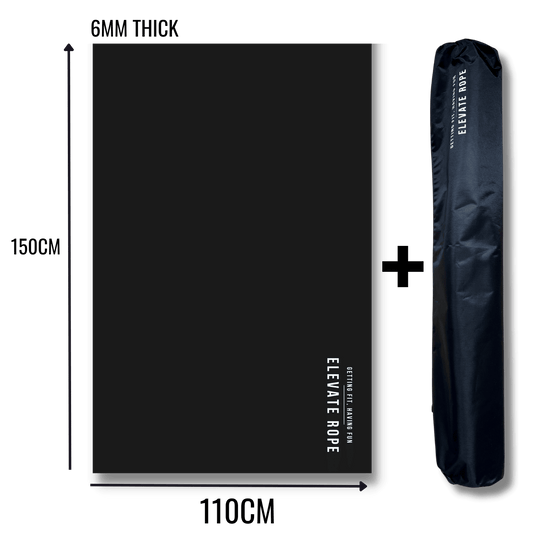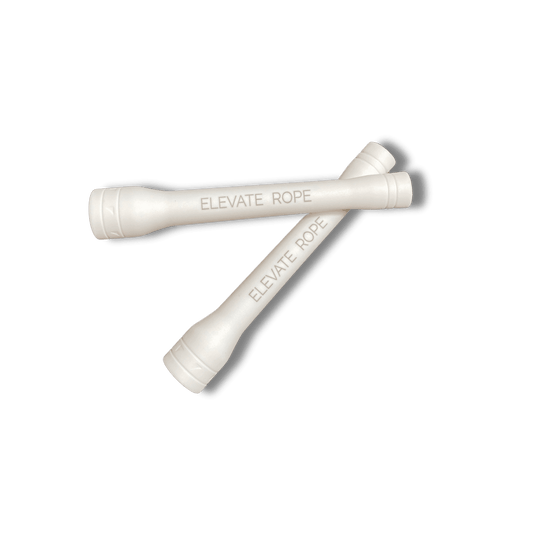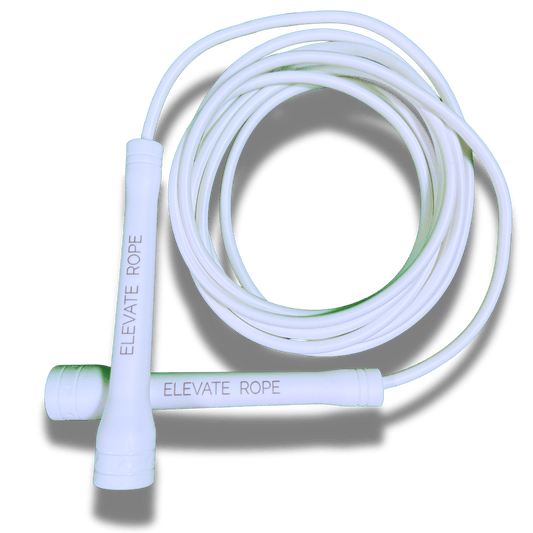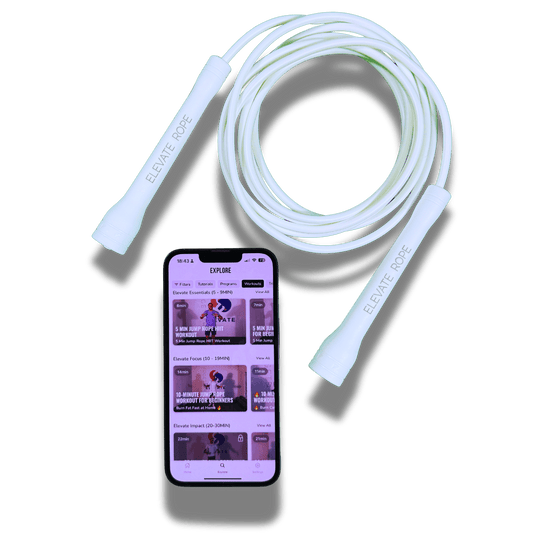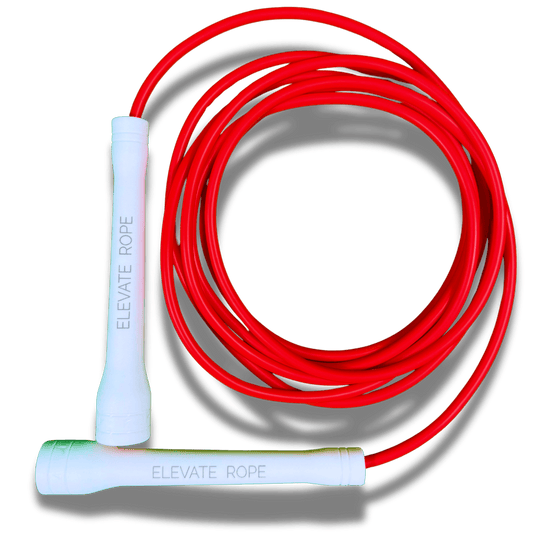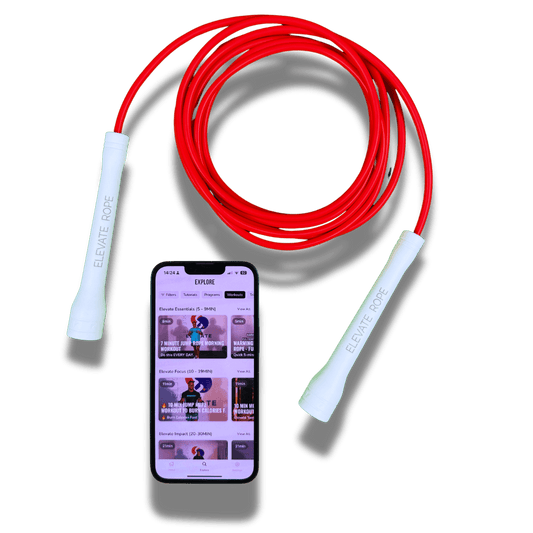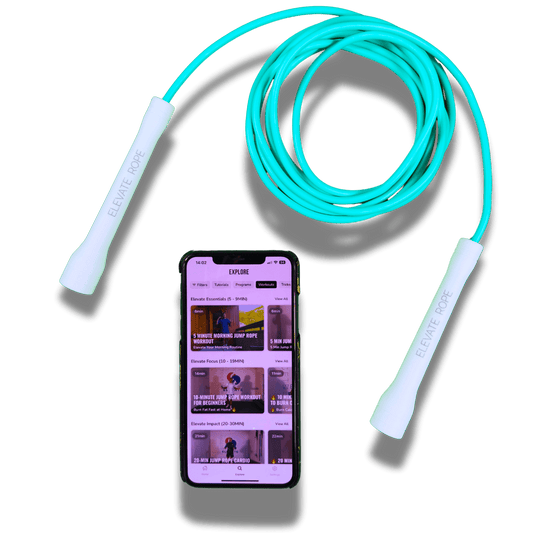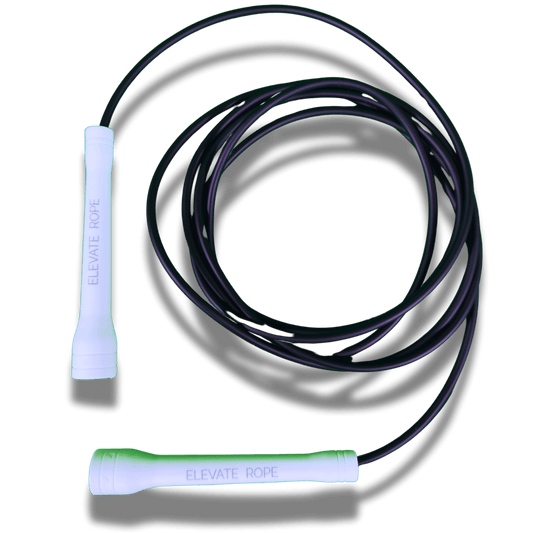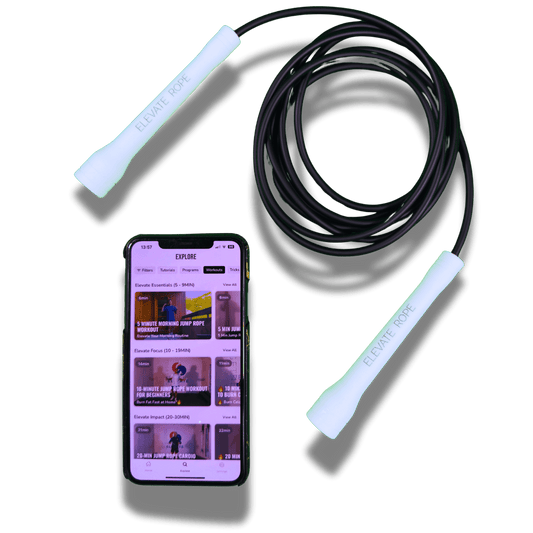1. Why Proper Jump Rope Length Matters
Did you just unwrap your new rope and find yourself tripping more than expected?
Chances are, your rope isn’t the right size.
Getting the proper jump rope length makes a massive difference in your rhythm, technique, and overall performance. A rope that’s too long slows you down — hitting the ground instead of gliding smoothly. A rope that’s too short? You’ll catch it behind your head before you even find your rhythm.
Whether you’re a beginner or a pro, sizing your rope correctly helps you learn faster, jump smoother, and build consistency.
🎥 Prefer to watch?
Watch our Jump Rope Sizing Tutorial
2. The Problem With the Wrong Rope Length
Too Long
If your rope is too long, it’ll slap the ground with every turn. That extra drag slows your rotations and throws off your timing. You’ll find yourself tripping or over-rotating your wrists just to keep the rope moving.
Too Short
If it’s too short, it doesn’t have enough clearance to pass under your feet. You’ll constantly clip your toes or hit yourself on the back of your head. This usually happens when beginners try to “adapt” their form instead of adjusting the rope.
👉 Bottom line: The wrong length trains bad habits and delays progress. Let’s fix that.

3. The Perfect Jump Rope Length for Every Level
Your ideal rope length depends on your skill level and goals. Here’s a quick breakdown:
For Beginners
Step on the center of your rope with one foot.
The handles should reach just about shoulder height.
This gives you a forgiving arc and plenty of room to learn basic jumps.
For Intermediate Jumpers
As your control improves, you can shorten it slightly — to armpit height.
This helps you spin faster, improve timing, and transition into more complex footwork.
For Advanced or Freestyle Jumpers
If you’re working on releases or speed combinations, the end of your handles should reach around nipple height.
A shorter rope improves agility, precision, and makes tricks like cross releases much cleaner.
Remember: shorter ropes require better wrist control and tighter form. Keep your hands close to your hips and rotate from the wrists — not your arms.
4. How to Adjust Your Rope Step-by-Step
Most Elevate ropes are adjustable — so let’s walk through it.
- Locate the internal clamp: Pull down on the handle to expose the small black clamp system.
- Loosen the teeth: Gently slide the squeeze mechanic away from the teeth mechanic.
- Adjust the bite: Move the teeth mechanic up or down the rope to your desired length.
- Secure it back: Slide the squeeze piece back into place to lock the rope.
- Test your fit: Step on the rope again, make sure it aligns with your target height, and do a few test skips.
✂️ When you’re sure, cut off the excess rope — but measure twice! Nothing’s worse than cutting it too short.
5. How Your Training Goals Affect Rope Length
Your proper jump rope length can vary depending on what you’re training for:
| Goal | Ideal Rope Length | Why It Helps |
| Beginner / Cardio | Shoulder height | Easier timing, smoother jumps |
| Speed / Endurance | Armpit height | Faster rotations, better control |
| Freestyle / Tricks | Nipple height | More precision and room for releases |
If you’re using different types of handles (like longer freestyle ones), you can go slightly shorter since the extra handle length compensates.
6. Common Sizing Mistakes (and How to Avoid Them)
- Holding your hands too far out: This effectively makes your rope shorter. Keep your elbows close to your ribs.
- Ignoring handle length: Always measure from the top of the handle, not the cord.
- Cutting before testing: Always test a few jumps before trimming any excess rope.
- Not adjusting for surface: Rough outdoor floors can cause drag — keep your rope 2–3 cm shorter indoors for optimal speed.
7. Quick Reference: Jump Rope Sizing Chart
| Height (cm) | Rope Length (m) |
| 140–150 cm | 2.10 m |
| 150–165 cm | 2.40 m |
| 165–175 cm | 2.70 m |
| 175–185 cm | 2.80 m |
| 185–195 cm | 3.00 m |
| 195+ cm | 3.10 m |
(Based on standard Elevate beaded and speed ropes)
8. Watch, Download & Jump Smarter
Prefer visuals over text?
🎥 Watch the Jump Rope Sizing Video Guide
Or dive deeper into technique and flow with our Jump Rope Tutorials.
9. Final Thoughts: Nail Your Perfect Rope Setup
Getting the proper jump rope length is one of the easiest wins you can make in your training. It’s the difference between frustration and flow — between tripping every few jumps and finding your rhythm effortlessly.
Once your rope fits your height and training style, everything changes: your timing sharpens, your posture improves, and every session feels smoother.
So grab your rope, size it right, and get ready to fly like a pro.
🎯 Get the Ascent MAX — Save €20
👉 Shop the Ascent MAX Bundle
